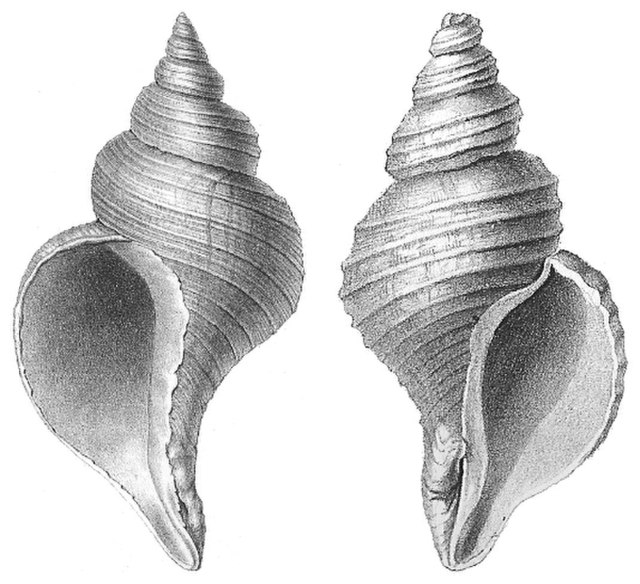A spire is a part of the coiled shell of molluscs. The spire consists of all of the whorls except for the body whorl. Each spire whorl represents a rotation of 360°. A spire is part of the shell of a snail, a gastropod mollusc, a gastropod shell, and also the whorls of the shell in ammonites, which are fossil shelled cephalopods.
Very high-spired shells of the sea snail species Turritella communis
Medium-spired shell (live individual) of a European land snail, probably Trochulus hispidus
Very low-spired shells of the land snail species Xerolenta obvia
The sinistral shell of the freshwater snail Planorbarius corneus, a view of the sunken spire, which is held facing downwards in life
The gastropod shell is part of the body of a gastropod or snail, a kind of mollusc. The shell is an exoskeleton, which protects from predators, mechanical damage, and dehydration, but also serves for muscle attachment and calcium storage. Some gastropods appear shell-less (slugs) but may have a remnant within the mantle, or in some cases the shell is reduced such that the body cannot be retracted within it (semi-slug). Some snails also possess an operculum that seals the opening of the shell, known as the aperture, which provides further protection. The study of mollusc shells is known as conchology. The biological study of gastropods, and other molluscs in general, is malacology. Shell morphology terms vary by species group.
Shells of two different species of sea snail: on the left is the normally sinistral (left-handed) shell of Neptunea angulata, on the right is the normally dextral (right-handed) shell of Neptunea despecta
The shell of a large land snail (probably Helix pomatia) with parts broken off to show the interior structure. 1 – umbilicus 2 – columellar plait 3 – aperture 4 – columella 5 – suture 6 – body whorl 7 – apex
Four views of a shell of Arianta arbustorum: Apertural view (top left), lateral view (top right), apical view (bottom left), and umbilical view (bottom right).
The left-handed turrid (Antiplanes vinosa)








